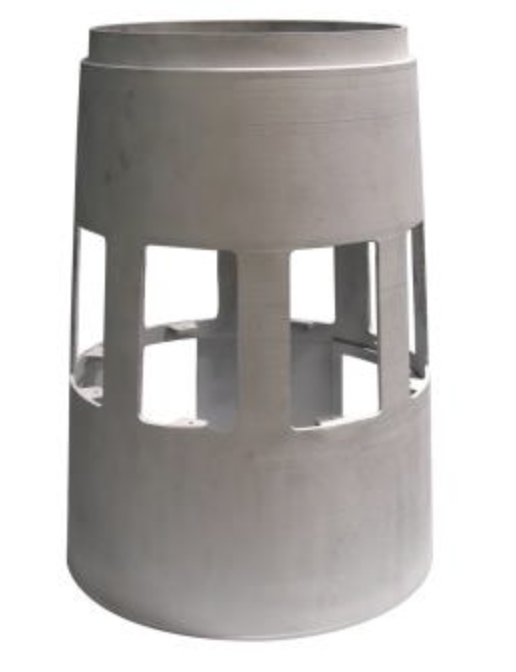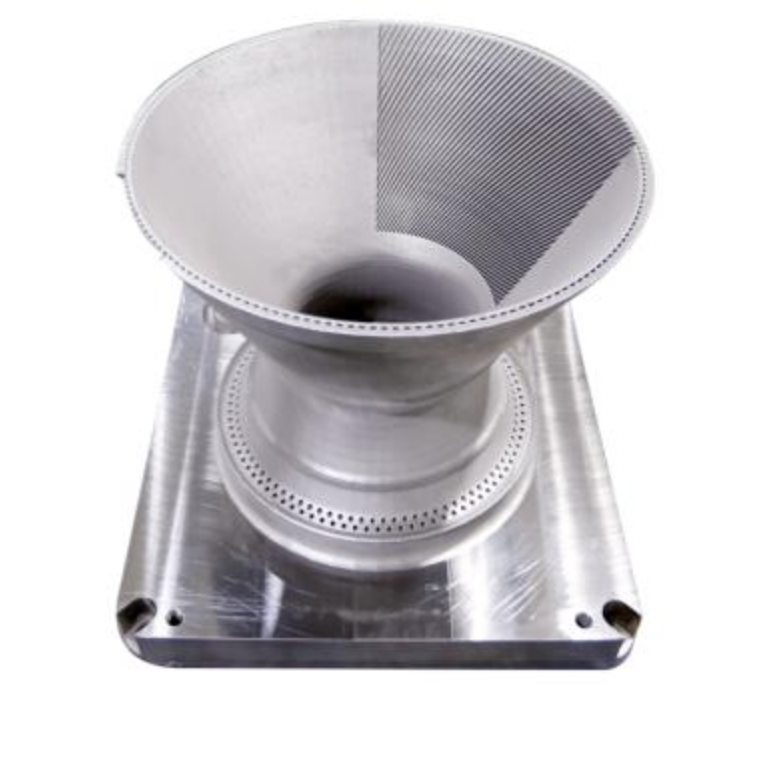Until recently, Chinese 3D printer manufacturers either stuck to selling in China, made inexpensive 3D printers, made copies of Western printers, or did some combination of all of the above. Over the past several years, however, more Chinese firms are moving towards more sophisticated gear aimed at Chinese and foreign buyers. INTAMSYS has been selling high-temperature FDM machines, Farsoon has spread oversees with its Flight systems, and Bright Laser Technologies is doing well.
EPlus 3D has also been growing, both as a business and in terms of its latest metal 3D printer, the EP-M450H. which has a massive build volume of 455 by 455 by 1100 mm. Note that the height is double that of the width and depth. The behemoth is incredibly tall system, pointing to an intended use in rocket chambers or Ku-band radar components. As the production volume of aerospace systems increases and 3D printing is used by absolutely everyone in the commercial space industry, this is a very timely release.
This new wave of Chinese vendors are now trying to deliver near-cutting edge systems with high performance. The next few years will see if the world sticks to EOS, 3D Systems, Stratasys and SLM Solutions or if many transition to new offerings by hereto little known Chinese firms. The future of our industry is at stake and it will be very interesting to see what happens.
So far, a lot of EPlus kit has been… rather too familiar to many of us. Indeed, several Chinese manufacturers have done outright one-to-one copies of some existing systems, such as the RPS SLA machine, M270, and M290 and other 3D printers. Clearly, this has to change and we hope that Chinese firms will bring innovation to market.

Together with Farsoon’s eight-laser metal 3D printer, the EP-M450H showcases the ambitions that these companies have. EPlus says that the new machine is an open system with new software that allows users to change parameters across individual components and areas of the build. Part traceability and integration with Siemens NX is possible. New hatching strategies and bigger layers can also be deployed to increase build speeds. The user interface is said to be easy and gas consumption has been reduced. It has optimized gas flow and could build at 55 cubic-cm/h and scan at 8 m/s. Recoating is bidirectional, which should save time. Users can replenish powder continually, and have the option of single- or dual-500W or 1000W lasers.

All in all, it seems like a complete system. I like that it is open, which gives manufacturing firms a lot of access to parameters. This could make it much easier to test and implement new powders or create unique settings that only make sense for you. Imagine if you were making valve bodies all day. Novel parameters tailored just for those shapes for that material would be much more impactful for you. Small optimizations, such as laser spot size here or using a slightly different laser movement there, could have huge effects on your time and yield. In serial production, that kind of openness does really matter. Indeed, a deep level of access to many settings could allow you to fundamentally drive your own utility of the machine. Particularly in manufacturing, this may make all the difference.
This is a beast of a machine that’s meant to spit out large Inconel or aluminum components. If it turns out to be capable and reliable, it could give established vendors a run for their money. Having said that, it will be a leap of faith for a business to go with a relatively unknown, foreign firm. Especially in aerospace, it may be quite difficult to now justify buying a Chinese machine because tensions are at an all time high. It remains to be seen if, in other less sensitive industries, people will opt for this tall giant. I’d really expect more success with EPlus’s more quotidian systems. But, any competition is good competition for us all!
Subscribe to Our Email Newsletter
Stay up-to-date on all the latest news from the 3D printing industry and receive information and offers from third party vendors.
You May Also Like
New Report: Semiconductor Industry to See $1.4B in 3D Printing Revenues by 2032
“The semiconductor sector has become the most strategically significant area of global industry.” Truer words are hard to come by when it comes to the modern world, and they are...
Will Photonic-Crystal Lasers Revolutionize 3D Printing?
Powder bed fusion (PBF) for metals and polymers predominantly utilizes lasers as the primary heat source. Some directed energy deposition (DED) technologies also employ lasers, while various vat polymerization methods...
3D Printing Unpeeled: Orbex Investment, IndoMIM and HP, Ultrasonic Waves
INDO-MIM has bought three HP Metal Jet S100 printers, operating two in India and one in Texas. This is a win for HP because the company has deep experience in...
3D Printing Webinar and Event Roundup: April 21, 2024
It’s another busy week of webinars and events, starting with Hannover Messe in Germany and continuing with Metalcasting Congress, Chinaplas, TechBlick’s Innovation Festival, and more. Stratasys continues its advanced training...































